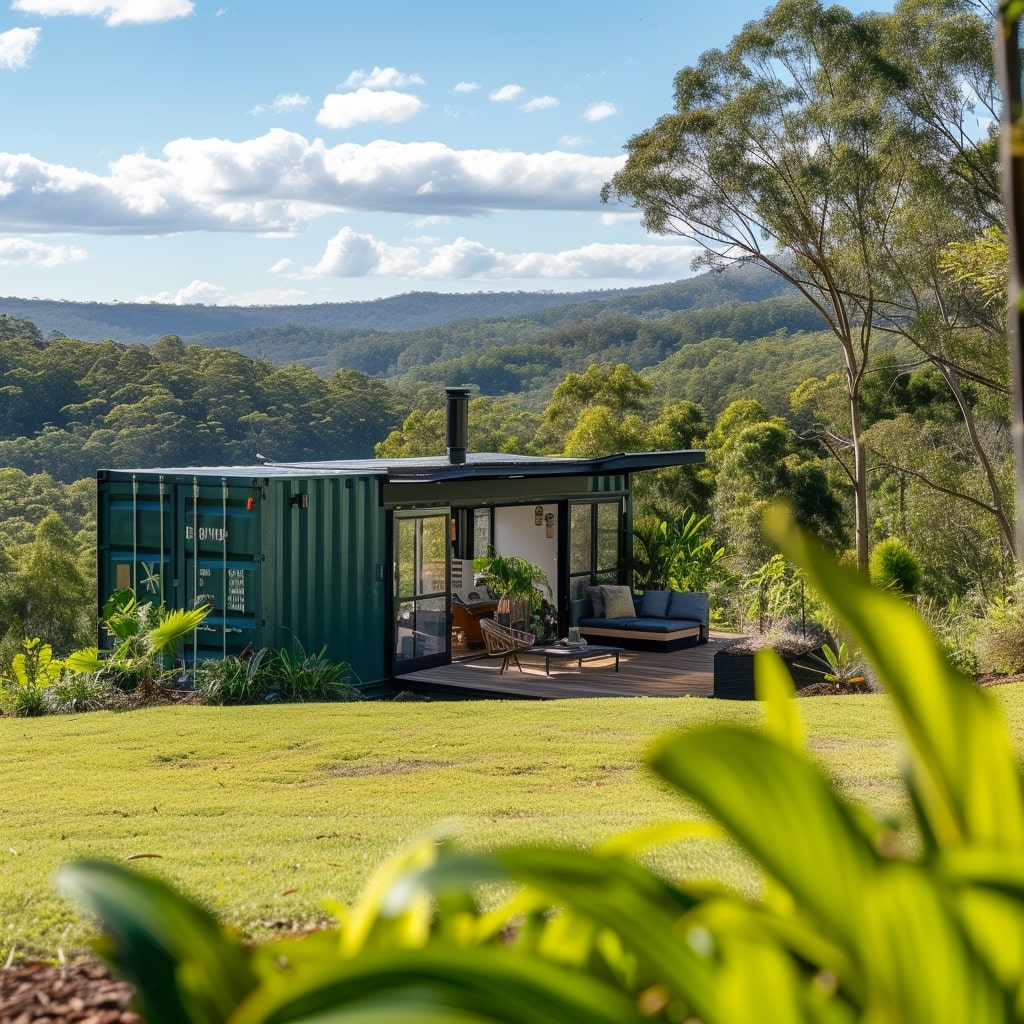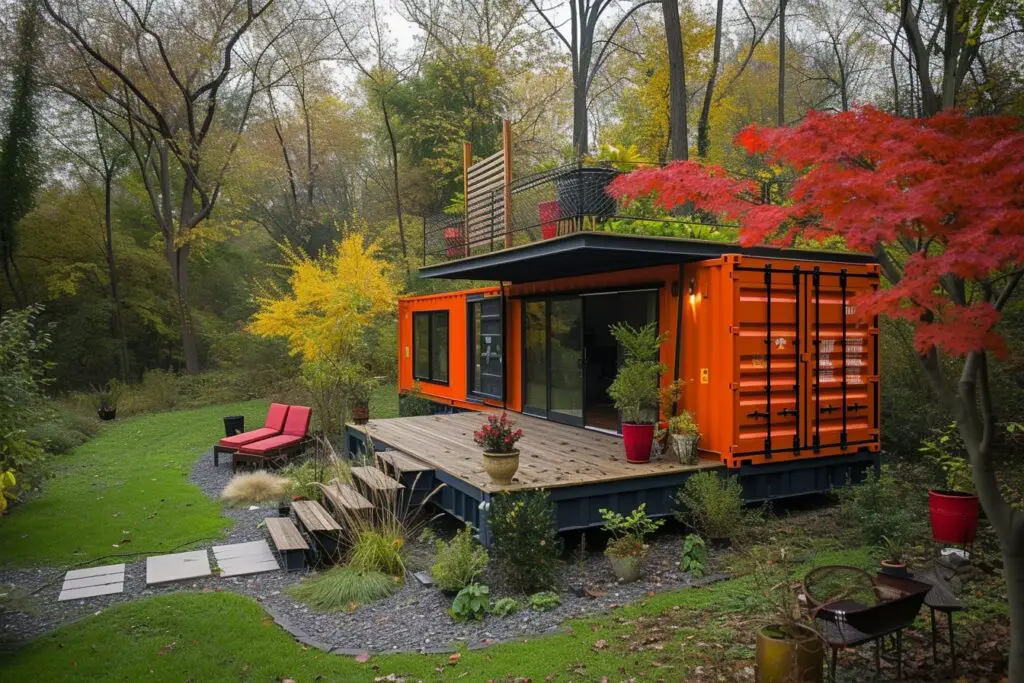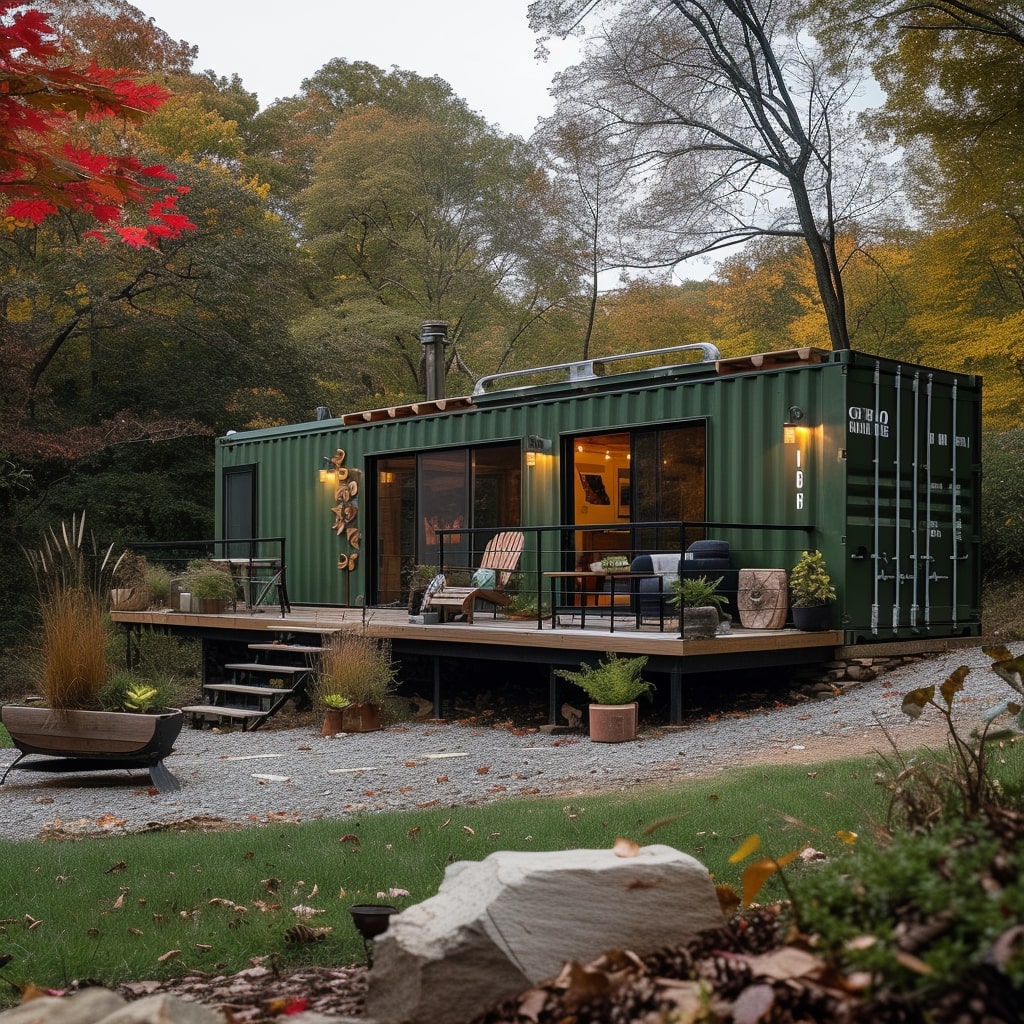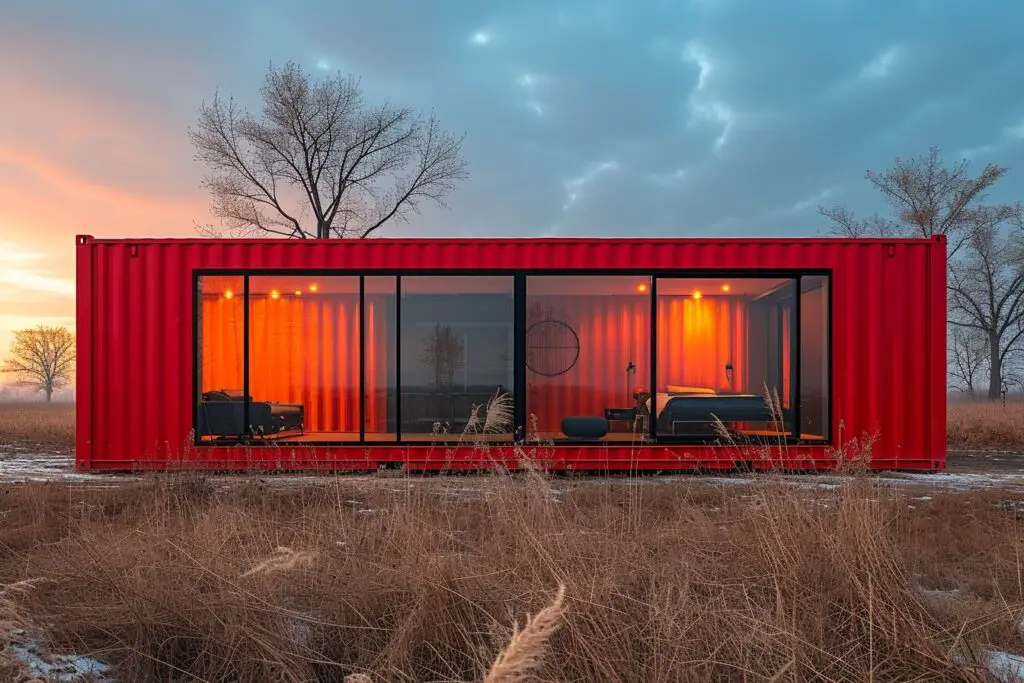The Ultimate Guide to Building a Shipping Container Cabin: 30 Essential Tips
Building a shipping container cabin offers a unique blend of sustainability, affordability, and style. Whether you’re a DIY enthusiast or planning to work with professionals, this guide covers all you need to know about creating your eco-friendly home from shipping containers.
We’ve compiled 30 essential tips, peppered with key shipping container terminology, to ensure your project is a success from start to finish.

Planning and Preparation
1. Understand Local Zoning Laws and Building Codes: Before embarking on your shipping container home project, familiarize yourself with local regulations. Compliance is key to avoiding costly changes.
2. Choose the Right Location: Select a site that supports the structural requirements of shipping container construction. Consider accessibility, ground conditions, and orientation for natural light and energy efficiency.
3. Design with Intent: A thoughtful design that considers your lifestyle, climate, and the container’s structural integrity will save you money and time. Use 3D modeling software or consult with an architect experienced in container homes.
4. Select the Ideal Containers: Opt for high-cube containers for extra ceiling height, and consider one-trip containers for minimal wear. Inspect containers in person when possible to assess condition.
Foundations and Structural Modifications
5. Foundation Options: From pier foundations to slab-on-grade, your choice should be influenced by soil type, climate, and budget. Ensure your foundation supports the weight and structure of your container home.
6. Reinforce After Cutting: Any modifications to your container’s structure, like adding windows or doors, require reinforcement. Use steel tubing or framing to maintain structural integrity.
7. Prevent Corrosion: Treat your container with rust inhibitors, especially if it’s used or will be located in a humid or coastal environment. Regular maintenance will extend its lifespan.
Insulation and Climate Control
8. Insulate Based on Climate: Choose insulation materials that suit your climate, such as spray foam for both insulation and moisture control. Proper insulation is crucial for comfort and energy efficiency.
9. Install Efficient Windows and Doors: Double-glazed windows and insulated doors improve thermal performance. Position windows for cross-ventilation to manage temperature naturally.
10. Roofing Considerations: Adding a roof above your container can reduce heat absorption and provide space for rainwater collection. Consider green roofing for additional insulation.

Interior and Exterior Design
11. Maximize Space with Smart Design: Incorporate multi-functional furniture and built-ins to make the most of limited space. Consider vertical storage and fold-down options.
12. Embrace Industrial Aesthetics: Highlight the container’s original features for a modern, industrial look. Exposed beams, corrugated metal, and shipping container floors can add character.
13. Exterior Finishes: Protect and personalize your cabin with durable paints, cladding, or living walls. These can also improve insulation and reduce heat gain.
Utilities and Systems
14. Off-Grid Capabilities: Solar panels, composting toilets, and rainwater harvesting systems can reduce your environmental impact and increase self-sufficiency.
15. Efficient Heating and Cooling: Mini-split systems, underfloor heating, and strategic shading can improve your cabin’s energy efficiency.
16. Plumbing and Electrical: Consult with professionals to ensure your systems are safely installed and compliant with codes. Consider the logistics of connecting to local utilities or opting for off-grid solutions.
Finishing Touches
17. Interior Finishes: Use low-VOC paints and sustainable materials to maintain indoor air quality. Reclaimed wood and natural textiles can add warmth and texture.
18. Landscaping for Sustainability: Native plants, permeable paving, and strategic tree planting can enhance your cabin’s aesthetics, privacy, and environmental footprint.
19. Outdoor Living Spaces: Decks, patios, and outdoor kitchens extend your living area and encourage interaction with nature. Use sustainable materials and consider the orientation for sun and wind.

Maintenance and Upkeep
20. Regular Inspections: Check for signs of rust, wear, and leaks. Regular maintenance ensures your cabin remains safe and comfortable.
21. Sustainable Practices: Incorporate composting, recycling, and energy conservation into your daily routines to minimize your cabin’s environmental impact.
Budgeting and Financing
22. Cost-Effective Sourcing: Compare prices from multiple container suppliers and consider transportation costs. Buying locally can save on delivery fees.
23. Budget for the Unexpected: Set aside a contingency fund for unforeseen expenses. Planning and careful budgeting can mitigate surprises, but flexibility is key.
24. DIY vs. Professional Help: Evaluate which tasks you can realistically do yourself and where professional help is needed. Skilled tasks, particularly those related to utilities, often require licensed professionals.
Community and Legal Considerations
25. Engage with Your Community: Sharing your project with neighbors and local officials can foster support and potentially ease the permitting process.
26. Understand Insurance and Financing: Container homes can be challenging to finance and insure due to their unconventional nature. Research options early to find companies that understand and support alternative housing.
Sustainability and Environmental Impact
27. Source Containers Ethically: Choose suppliers who source containers responsibly. Some containers may have transported hazardous materials; obtaining a container’s history can avoid potential health risks.
28. Recycle and Reuse: Incorporate recycled materials into your build wherever possible. This not only saves money but also reduces your environmental footprint.
29. Consider Your Cabin’s End of Life: Design for disassembly and future reuse. Sustainable practices should consider the long-term impact of your cabin.
30. Certification and Green Building Standards: Pursuing certification through programs like LEED can guide sustainable choices and add value to your project.

Conclusion
Building a shipping container cabin is a rewarding project that combines creativity, sustainability, and innovation. By following these 30 tips, you’re well-equipped to navigate the complexities of construction, design a space that reflects your values, and achieve a home that’s both functional and inspiring.
Remember, the key to a successful container cabin project lies in thorough planning, a commitment to sustainability, and a willingness to embrace the unique challenges and opportunities that come with this distinctive building material.
